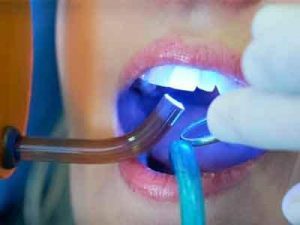- Home
- Editorial
- News
- Practice Guidelines
- Anesthesiology Guidelines
- Cancer Guidelines
- Cardiac Sciences Guidelines
- Critical Care Guidelines
- Dentistry Guidelines
- Dermatology Guidelines
- Diabetes and Endo Guidelines
- Diagnostics Guidelines
- ENT Guidelines
- Featured Practice Guidelines
- Gastroenterology Guidelines
- Geriatrics Guidelines
- Medicine Guidelines
- Nephrology Guidelines
- Neurosciences Guidelines
- Obs and Gynae Guidelines
- Ophthalmology Guidelines
- Orthopaedics Guidelines
- Paediatrics Guidelines
- Psychiatry Guidelines
- Pulmonology Guidelines
- Radiology Guidelines
- Surgery Guidelines
- Urology Guidelines
New material developed to regenerate tooth enamel

A new way to grow mineralized materials which could regenerate hard tissues such as dental enamel and bone has been developed, according to a study published in Nature Communications.
Enamel, located on the outer part of our teeth, is the hardest tissue in the body and enables our teeth to function for a large part of our lifetime despite biting forces, exposure to acidic foods and drinks and extreme temperatures. This remarkable performance results from its highly organized structure.
However, unlike other tissues of the body, enamel cannot regenerate once it is lost, which can lead to pain and tooth loss. These problems affect more than 50 percent of the world's population.
The study shows that the new approach can create materials with remarkable precision and order that look and behave like dental enamel. The materials could be used for a wide variety of dental complications such as the prevention and treatment of tooth decay or tooth sensitivity - also known as dentin hypersensitivity.
Dr. Sherif Elsharkawy, a dentist and first author of the study from Queen Mary's School of Engineering and Materials Science, said: "This is exciting because the simplicity and versatility of the mineralization platform open up opportunities to treat and regenerate dental tissues. For example, we could develop acid resistant bandages that can infiltrate, mineralize, and shield exposed dentinal tubules of human teeth for the treatment of dentin hypersensitivity."
The mechanism that has been developed is based on a specific protein material that is able to trigger and guide the growth of apatite nanocrystals at multiple scales - similarly to how these crystals grow when dental enamel develops in our body. This structural organization is critical for the outstanding physical properties exhibited by natural dental enamel.
Lead author Professor Alvaro Mata, from Queen Mary's School of Engineering and Materials Science, said: "A major goal in materials science is to learn from nature to develop useful materials based on the precise control of molecular building blocks. The key discovery has been the possibility to exploit disordered proteins to control and guide the process of mineralization at multiple scales. Through this, we have developed a technique to easily grow synthetic materials that emulate such hierarchically organized architecture over large areas and with the capacity to tune their properties."
Enabling control of the mineralization process opens the possibility to create materials with properties that mimic different hard tissues beyond enamel such as bone and dentin. As such, the work has the potential to be used in a variety of applications in regenerative medicine. In addition, the study also provides insights into the role of protein disorder in human physiology and pathology.

Disclaimer: This site is primarily intended for healthcare professionals. Any content/information on this website does not replace the advice of medical and/or health professionals and should not be construed as medical/diagnostic advice/endorsement or prescription. Use of this site is subject to our terms of use, privacy policy, advertisement policy. © 2020 Minerva Medical Treatment Pvt Ltd